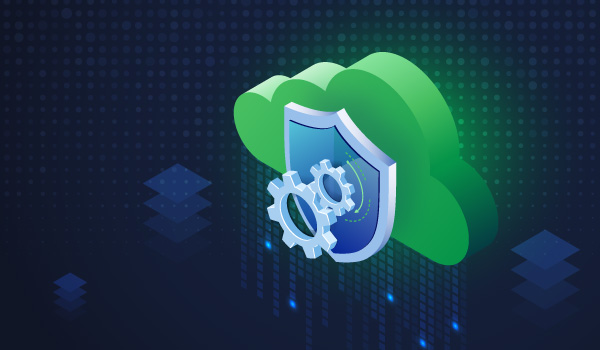0 min read
As advanced threats continue to morph and escalate, it’s easy to gravitate towards the latest tool or “shiny object” in the news. An estimated 80% of threats and vulnerabilities are more than twelve months old, highlighting the challenge of legacy infrastructure and products. Use good cyber hygiene to prevent or mitigate security problems with IT practices that maintain health and resiliency.
This article outlines the challenges of adopting cyber hygiene, security, the benefits of implementing these foundational practices, and how MSPs can recommend practical steps to cyber hygiene.
What is Cyber Hygiene
Like brushing teeth, cyber hygiene is part routine and part repetition. Protective routines reinforce procedures and user behavior that keep sensitive customer data safe. In the face of rapid change, cybersecurity fundamentals never go out of style.
Cyber Hygiene Obstacles Abound
It can be challenging to balance fighting new and emerging cyber threats while maintaining legacy systems and IT processes. Small-to-medium-sized businesses (SMBs) face the same threats as larger enterprises but with far fewer resources.
“Over the last 18 months, Netsurion’s EventTracker Security Operations Center (SOC) detected attackers performing reconnaissance to look for unpatched systems, unnecessary ports and protocols, and security gaps to exploit,” states Shavonn Mealing, vice president of channel at Netsurion. “Attack surface complexity has also grown, requiring protection across servers, datacenters, and cloud computing assets.”
The ongoing shortage of IT and cybersecurity experts means that small security gaps compound into far-reaching consequences.
Minimize Risk and Complexity with Cyber Hygiene
Poor IT practices increase exposure and cost. IT complexity can unfold over time, resulting in a lack of process understanding and system manageability.

Enhance security operations efficiency with a balance of cyber hygiene technology and routines. For example, implementing good user password practices reduces authentication risks. MSSPs are well poised to advise SMBs regarding solutions and best practices like automation and repeatable outcomes.
Good Habits Safeguard Data and Users
There are several crucial steps to develop best practices and an operational routine for cyber hygiene:
- Implement Device Hardening: Regularly patch vulnerabilities, turn off unnecessary functions, and disable unused ports and protocols.
- Add Multi-Factor Authentication (MFA): Limit access to your network and resources with MFA. While virtually all vendors now offer MFA, many organizations neglect to take the extra step to implement them.
- Educate users on phishing risks: Continually reinforce to users to be diligent and think before clicking.
- Use configuration best practices: Configuration errors cause 52% of data incidents per Verizon. Minimize configuration drift over time by enhancing resilience and security.
- Segment the Networks: Divide your network into multiple segments that prevent a single point of failure and make it difficult for cyber criminals to move laterally in customer networks.
- Enable device logging: In some cases, device and application logging is off by default. A Security Information and Event Management (SIEM) solution correlates logs to identify potential network security threats and suspicious user activity for troubleshooting.
- Eliminate unused hardware and software: Consolidate your tech vendors to streamline security as well as enhance efficiencies and reduce costs.
- Monitor 24/7/365: You can’t manage and protect what you can’t see. Comprehensive visibility and monitoring provide around-the-clock safeguards against both internal and external threats.
Implementing robust cybersecurity procedures is vital to defend against modern threats. Cyber hygiene helps maintain a strong security posture and minimize vulnerabilities.
Enhance People Vigilance
Embrace foundational security that the Cybersecurity and Infrastructure Security Agenda (CISA) terms “being Cyber Smart” to make it easier to manage the inevitable attacks and third-party software gaps. Remember that people are often the weakest link in protecting organizations to become more proactive and overcome blind spots. According to a Stanford University study, human error causes 88% of all data incidents and breaches. Netsurion’s Mealing points out, “Process repetition and training reinforcement are just some ways to help bolster cyber hygiene with your employees and customers.”
How MSSPs Can Help
It’s easy for businesses and service providers to become distracted by the latest buzzword or point product. Help your customers be proactive and vigilant regarding cyber hygiene basics. As a trusted advisor, stay focused on baseline cybersecurity actions that remove the most significant risk at the least cost. Overcoming advanced threats requires more mature technology, skilled people, and comprehensive incident response than in years past. Netsurion’s Managed Threat Protection offering provides an integrated approach beyond standalone solutions. Learn more about the advantages of co-managed security at Netsurion.

Paula Rhea
Paula Rhea, CISSP is a product marketing manager at Netsurion. She is responsible for developing go-to-market strategies for customers and partners regarding managed threat protection and secure edge networking. Paula has extensive cybersecurity experience in managed services, compliance, and endpoint protection.

